The 7 Best Car Vacuums for Interior Cleaning and Detailing
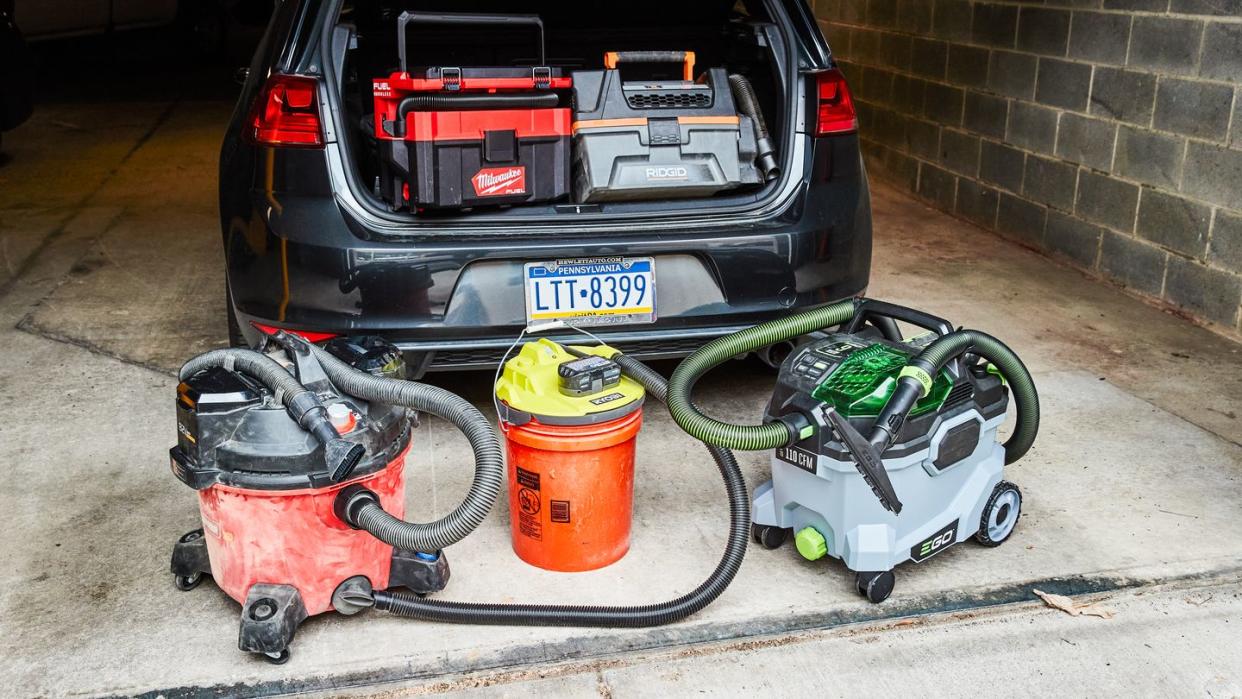
"Hearst Magazines and Yahoo may earn commission or revenue on some items through these links."
No matter the age of your vehicle, its interior is bound to accumulate dirt and dust over time, degrading its appearance and possibly leading to hard-to-remove stains in carpets and upholstery. Regular vacuum cleaning is a great way to keep your car’s interior looking newer for longer. Ideally, a car vacuum will be powerful enough to suck up larger clumps of dirt, portable enough to store inside the vehicle, and have attachments that reach between small gaps like those around car seats.
While shop vacs offer up fantastic functionality and power, they can prove to be unruly when space is at a premium. Instead, turn to one of these portable car vacuums that are sure to streamline your interior automotive cleaning. To make our recommendations, we researched and tested seven battery-powered vacuums for power, battery life, and versatility of their attachments.
For more automotive detailing products, check out our pieces on Microfiber Cloths, Car Scratch Removers, and Car Covers.
The Best Car Vacuums
Best Toolbox-Style: Milwaukee M18 Packout 2.5 Gallon Vacuum
Best Cordless Canister: EGO Power+ 9 Gallon Wet/ Dry Vacuum
Best Shop-Vac Alternative: Snapper XD
Best Value: Ridgid 3 Gallon Handheld Vacuum
Best Portability: Ryobi Multi-Surface Handheld Vacuum
What to Consider
Buying a vacuum for your automobile’s interior can be a surprisingly complicated endeavor. With so many form factors and metrics to look at, we focused on compact cordless units.
Vacuum Style
Canister style vacuums are one of the most popular choices for automotive applications—similar to Shop Vacs but down-sized. These types of vacuums feature large capacity tanks along with high power and wet/ dry cleanup capability. The vacs are great for big messes, but not as portable as other styles.
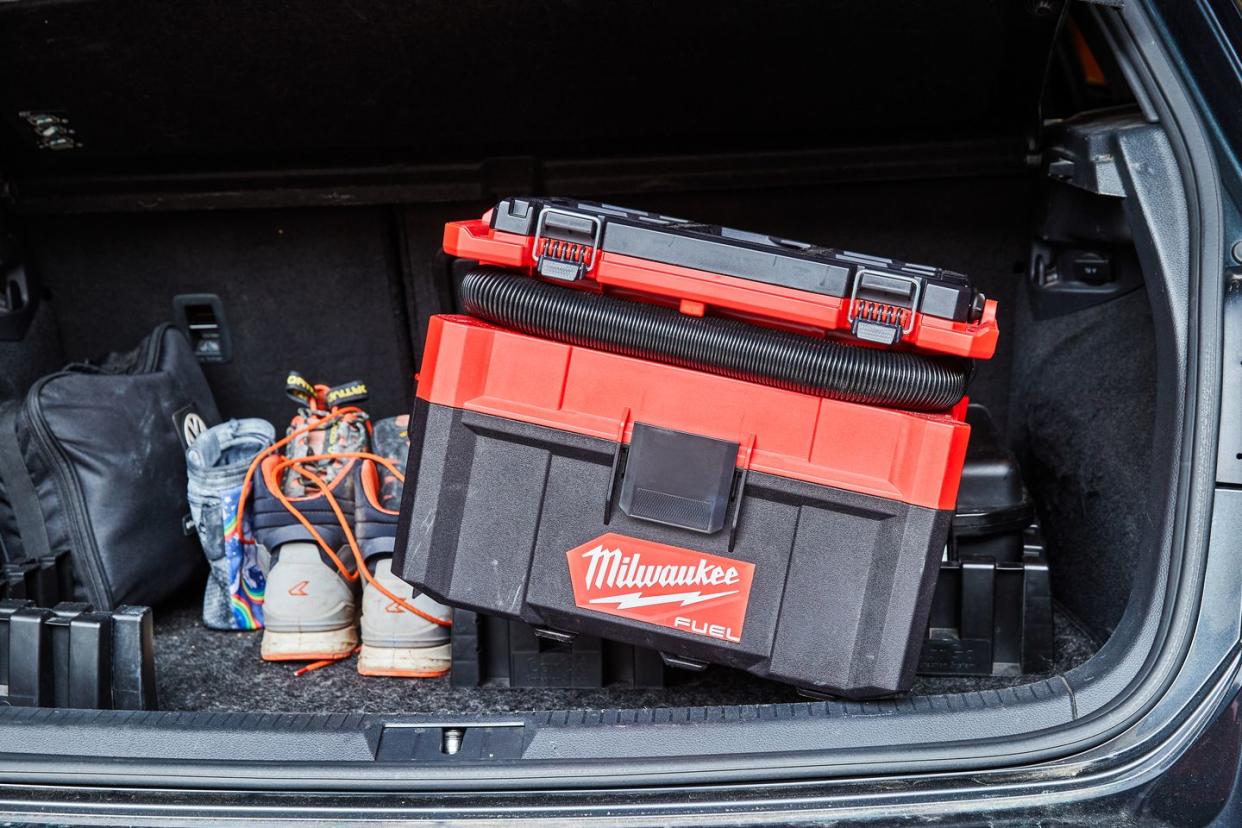
Then there is the toolbox style, like our tested Milwaukee Packout cleaner. This design fittingly resembles a small toolbox, with an integrated carrying handle. These vacuum cleaners are smaller and boxier than a canister for easy storage inside the vehicle. Some of these vacuums also employ built-in storage compartments for any included attachments. They also usually have a smaller tank capacity of just a few gallons, and less power than canisters in exchange for their increased portability.
Miniature handheld vacuums can also be convenient for cleaning up small messes quickly thanks to their compact, lightweight design and ability to be used one-handed. However, these vacuum cleaners are not suited for big detailing jobs because they have smaller capacity tanks and typically shorter battery lives. Handheld vacs may also be lacking in attachments to reach between and under car seats.
Suction Power
The vacuum industry rates its products using the volumetric measurement of cubic feet per minute (CFM). This is the amount of air that the vacuum motor is able to move over a given rate of time. Theoretically, a higher CFM should mean a faster cleanup. However, in the real world we expect vacuums to be filled with dirt and detritus instead of air. CFM measurement tells the user how powerful the motor may be on a base level, but not how resistant it is to potential clogs.
To get standardized results for ourselves, we’ve devised a “bucket test” in which each vacuum is tasked with sucking down the same amount of material inside a plastic bucket. We filled the bucket with finer dirt as well as larger pieces of mulch in order to test the vacuums against a variety of potential messes. You can find the results for each product under the specification “Pick Up Time”.
Note that the first two entries from Makita and Bosch do not feature this spec because they were tested for an earlier version of this article which did not include the bucket test.
Battery Life
If you plan to detail an entire vehicle, then battery life will end up being a very important metric. We expect a battery life of about 30 minutes or longer to be suitable for cleaning an entire vehicle on one charge.
With any cordless vacuum system, battery size and run times will be important to take into account. Luckily, a lot of these units run on the same batteries used with other cordless tools including drills, saws, flashlights, etc.–provided that they’re the same brand and the correct voltage. If you’re starting from a clean slate, we’d recommend splurging on batteries. One charger and two batteries will be more than enough to get you up and running. Unfortunately, some of these units come without a battery or charger in the box, which won't do you any good, so be sure to comb through the "what’s included" section.
Some important numbers to consider when looking at batteries are voltage (V) and amp hours (Ah). Voltage refers to the raw amount of power that a battery can put out at any given time. In the case of vacuums, anything below 18V isn’t really worth your time. Meanwhile, amp hours is a measure of how many amps a battery can put out over an hour–higher numbers here will lead to longer running times. It’s important to note that 25 minutes should be more than enough to tackle just about any car or SUV.
Why Trust Us
As an outdoor enthusiast and detailing fanatic, I know the ins and outs of keeping my interior in good shape. So I developed a series of tests to find the best cordless vacuums. First, I analyzed the attachments on offer, focusing on their ability to slip into hard-to-reach areas without scratching delicate components. This involved squeezing the crevice attachments into the gaps between the front seats and the door cards of my Volkswagen Golf GTI.
I gauged how easily the vacuums could rid the carpets of common contaminants, including dirt, sand, and hair by evaluating how much debris each picked up in a single pass. Then, I used the bucket test to see how quickly the vacuum could pick up a relatively large mess, and tested for battery life.
We charged each vacuum battery to 100 percent and then ran it at its highest power setting without load until the battery was discharged. This test is meant to give the user a standard baseline value for battery capacity, but if you run the vacuum at lower power or tend to run the motor in shorter bursts, you will likely get more time out of a single charge.
Take these numbers with a grain of salt though, as almost all of these vacuums use different size rechargeable batteries. Select models that occupy an existing battery ecosystem–Milwaukee, Makita, Bosch, etc.–have bigger batteries that you can buy for longer run times.
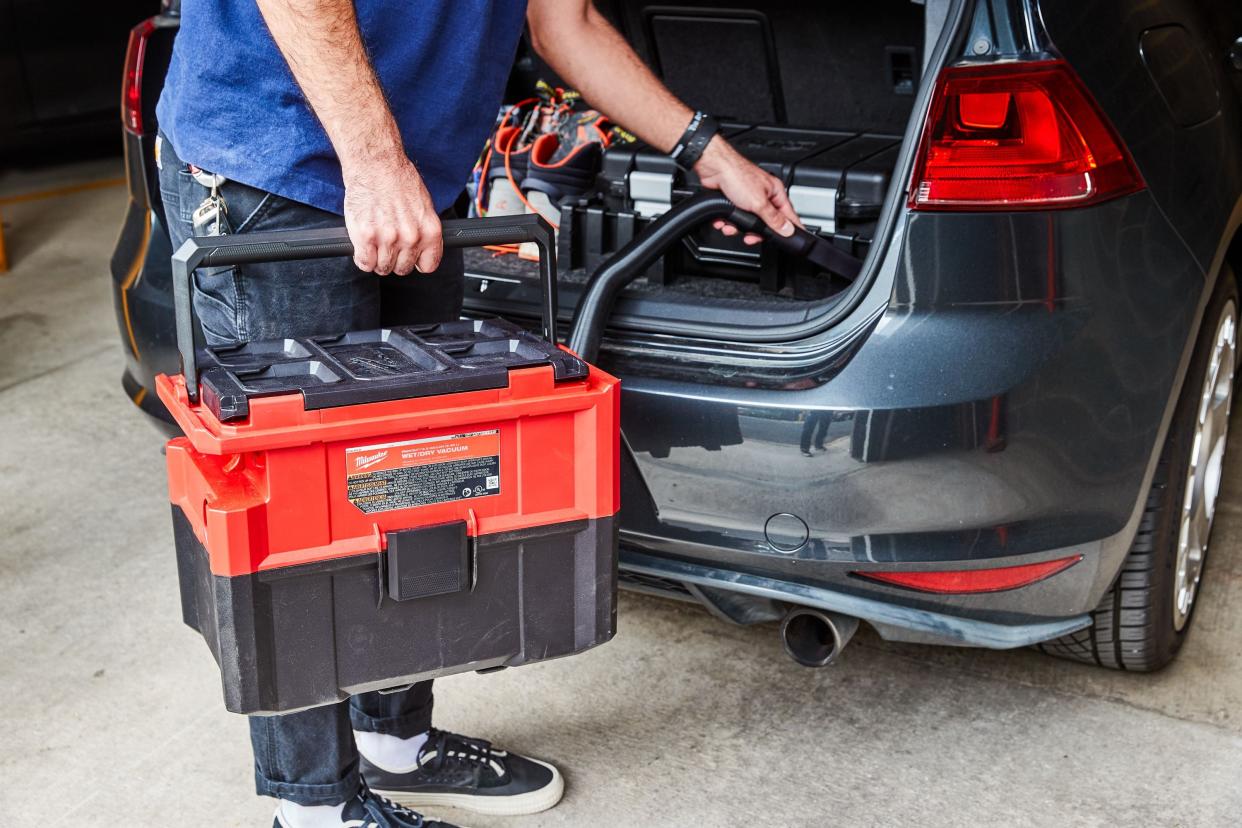
M18 Packout 2.5 Gallon Car Vacuum
amazon.com
$252.00
Trevor RaabDon’t let the specs fool you, Milwaukee’s 2.5-gallon M18 Packout vacuum performed surprisingly well. Tipping the scales at just 10 pounds, it’s light and small enough to well… pack out in the back of your vehicle and forget about it until it's either time to clean up or recharge the battery.
The included crevice tool—a must for any automotive application—is small enough to fit into small nooks and crannies without getting clogged with bigger debris. The short hose was our only real gripe with the Packout, but the vacuum was small enough that I could just plop it onto the seat next to me.
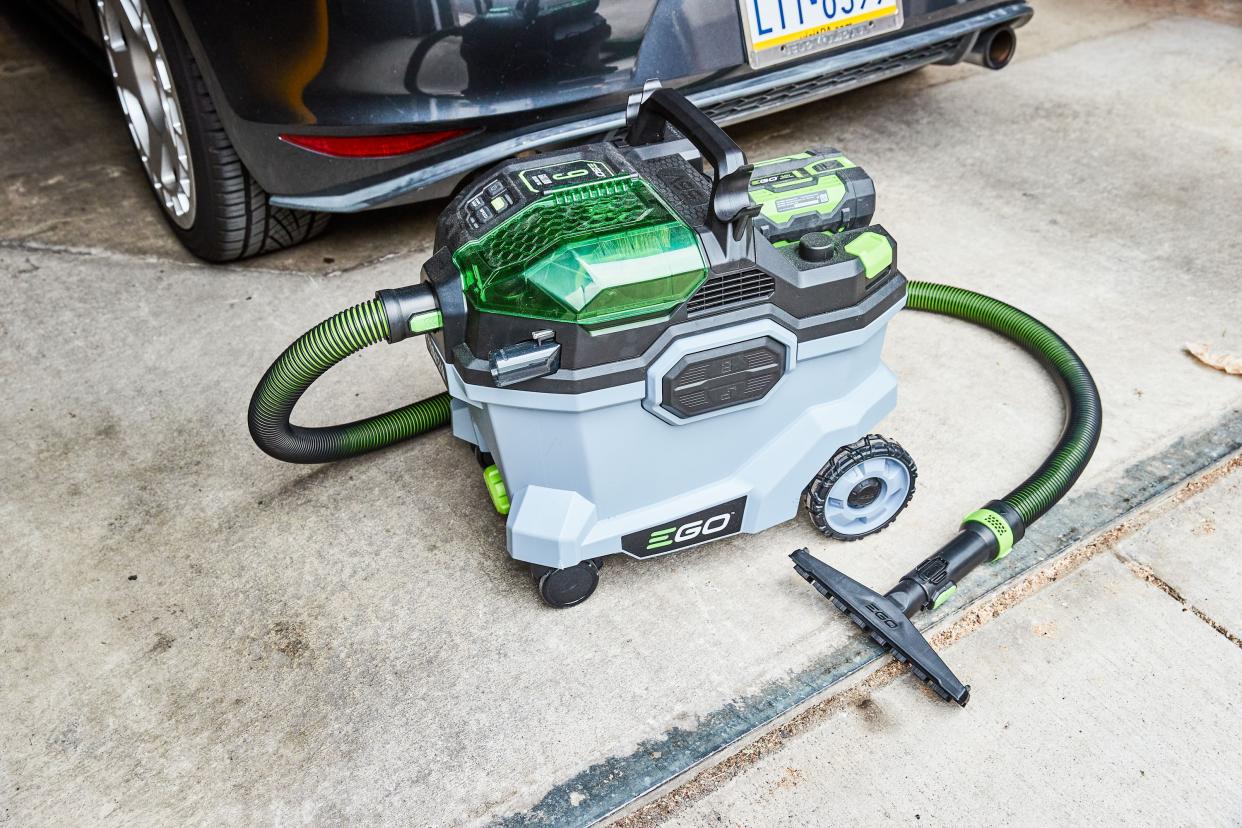
9 Gallon Wet/Dry Car Vacuum
amazon.com
$299.99
Trevor RaabWith its more conventional “shop vac” form factor, Ego’s Power+ is more of a permanent solution that can live in your garage. Great for ridding your interior of dirt and other detritus, but also powerful enough to fulfill its duty as a shop vac.
We could rave about its superior stats, but the great thing about the Ego is that it just works, and works well. Last but not least, every vacuum should either have a rocker switch or Ego’s push-button system to turn them on and off. Anything else with a dial or a combination of buttons and dials is unnecessarily complicated.
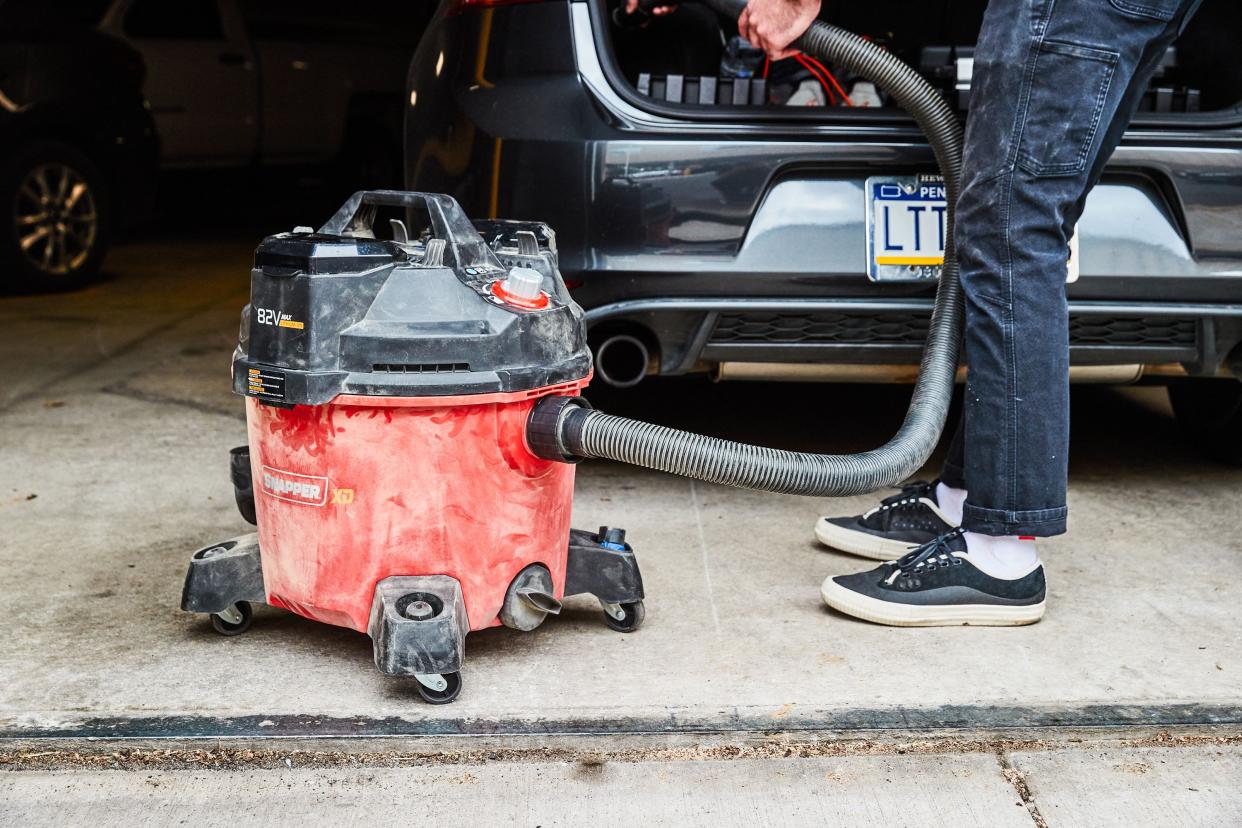
XD Shop Vacuum for Cars
amazon.com
$184.99
Trevor RaabSnapper’s XD is a great option for those just looking for outright performance. I look at the XD as a conventional shop vac that’s been converted to be cordless. Its 730 watt motor paired with an 82 volt battery system is only really comparable to the Ego, which works off of 56 volts. Effectively, more voltage means more power.
This canister vac also includes a dual battery slot system, which allows the operator to essentially double their battery life for big clean-up jobs around the vehicle or garage. The tapered end of the hose—which made a habit of getting clogged with larger debris—was our only gripe with the Snapper.
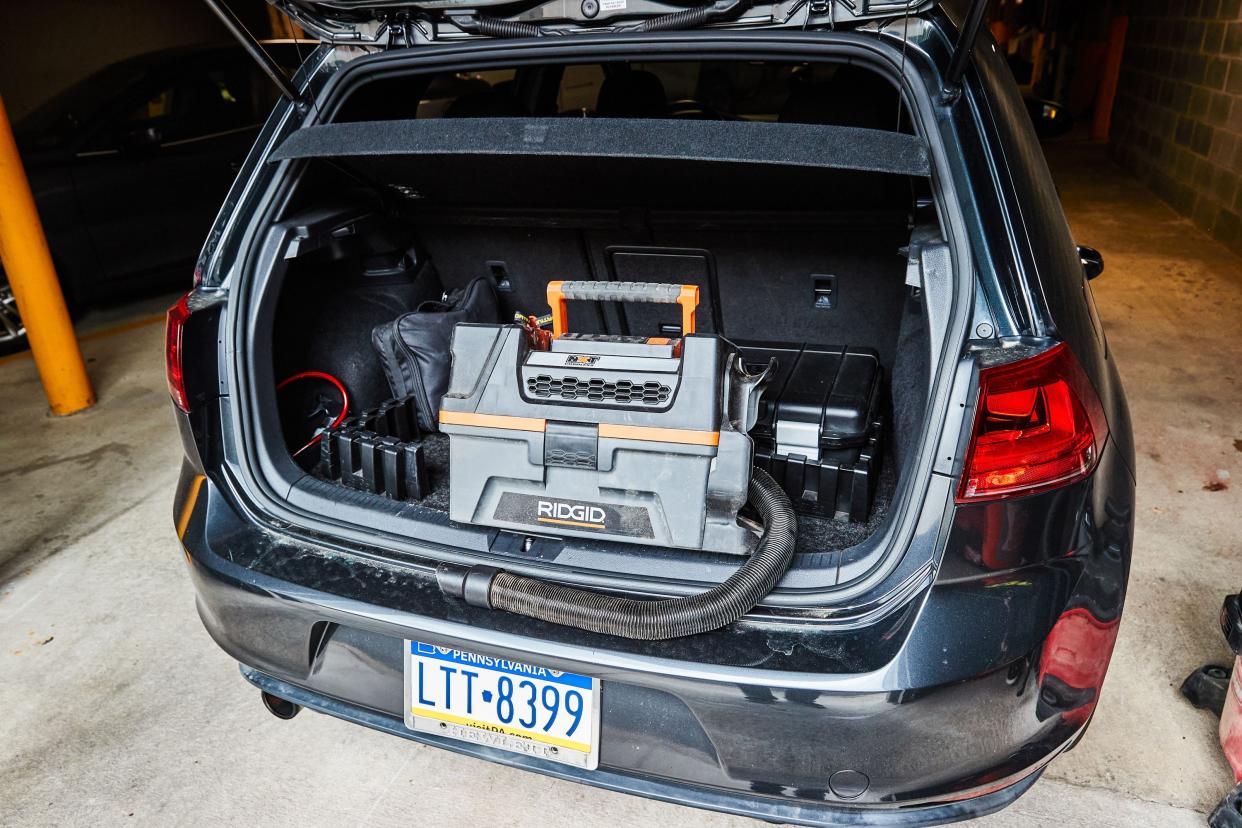
3 Gallon Handheld Car Vacuum
amazon.com
$182.02
Trevor RaabOn paper, Ridgid’s 3-gallon toolbox vacuum doesn’t have much going for itself. It’s not the most powerful, or the lightest, or the smallest, but it’s comfortably the most affordable. Looking at the performance numbers, it’s also not too far from what the Milwaukee Packout could achieve. The built-in carrying handle, light weight, and square proportions make this vac easy to store in a trunk or behind a car seat.
While the price above is just for the tool only, the additional battery and charger will only set you back around $76. Most of the other brands are asking well over $100 for a charger and battery of similar capacity.
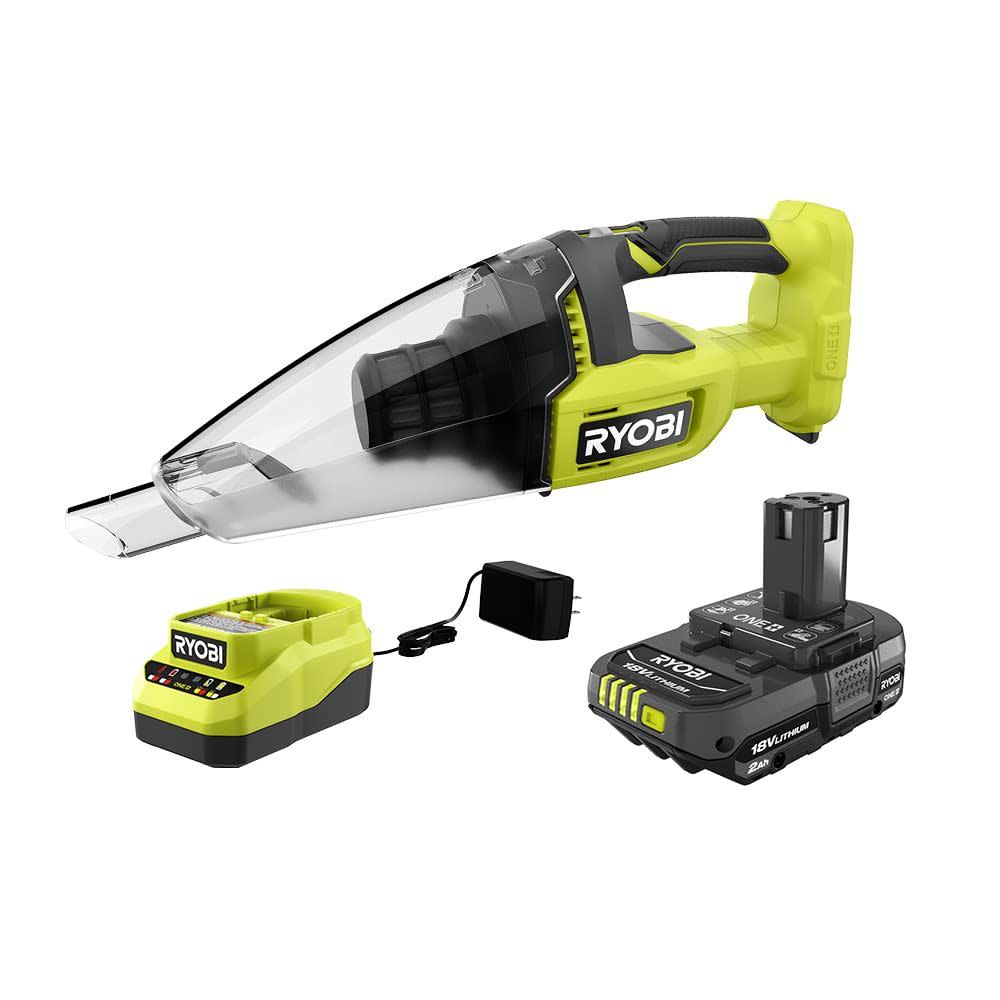
Multi-Surface Handheld Car Vacuum
$133.97
Ryobi’s canister vacuum is unique in that it doesn’t really come with a canister. Rather, it’s designed to feed into a bucket—clamping onto the lip at the top. A very novel solution that’s inexpensive, and surprisingly compact. Four filter bags are also included to contain the dirtiest messes that you may tackle, but a short 15-minute battery life might have you going back to the charger before the job is done.
Our only gripes with the Ryobi were the narrow hose, which tended to clog, and the fact that the filter actually takes up a considerable amount of space in the bucket. It still remains a great value at around $135 for the vacuum, bucket, battery, and charger.
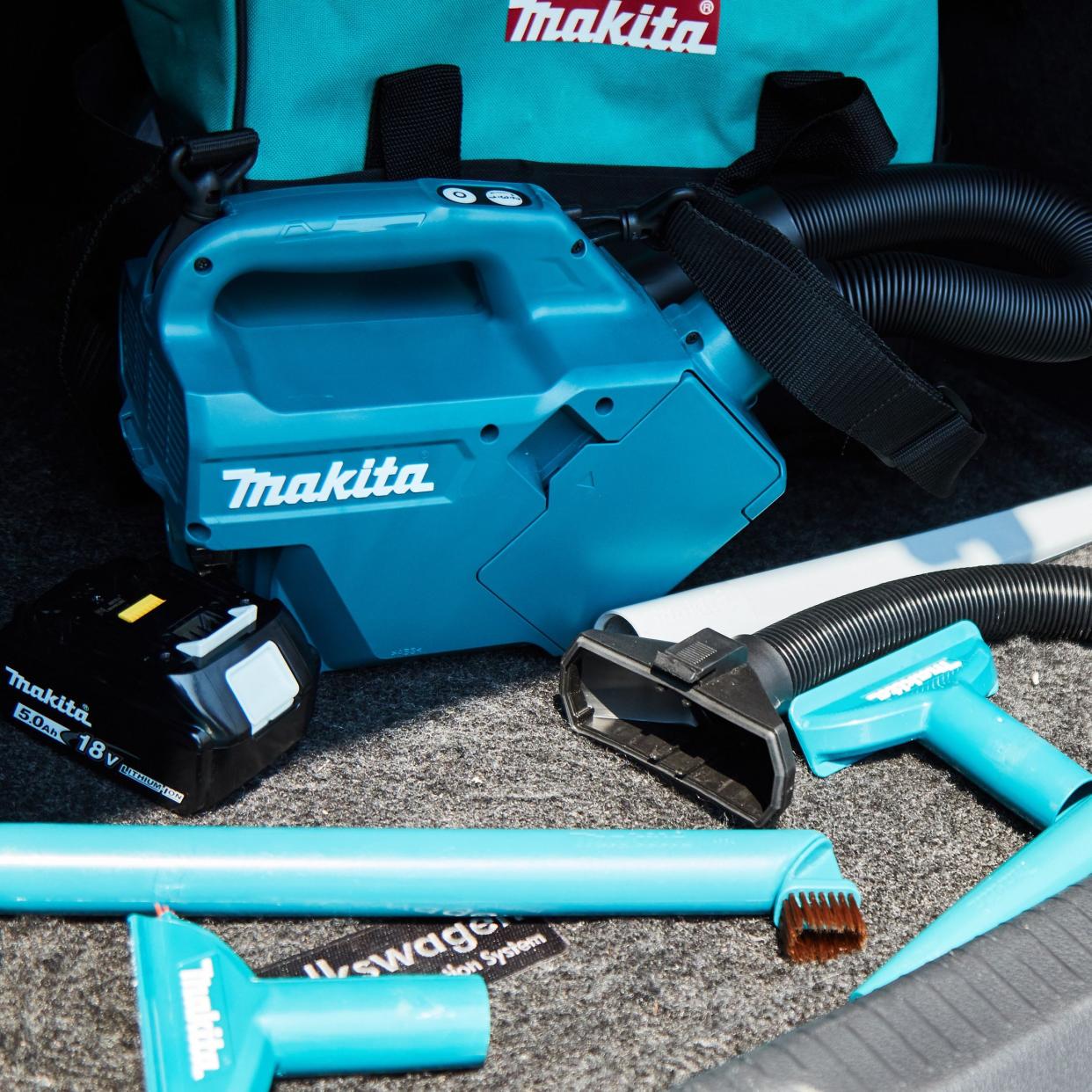
XLC07SY1 Handheld Car Vacuum
amazon.com
Trevor RaabThis compact vacuum kit from Makita comes with a plethora of attachments and accessories to get you up and running straight out of the box. With five attachments to choose from–including a crevice tool, brush nozzle, two floor nozzles, and a blower hose–the rubber crevice tool proved to be the most effective for squeezing into nooks and crannies..
Suction is adequate for small debris, but the unit struggled when it came into contact with larger detritus including stones, chunks of dirt, and bits of mulch. With this set, I’d strongly recommend buying a bigger battery. The standard unit comes with a 1.5-Ah pack, which won't last as long as some of the bigger units that Makita offer. Our test unit came with a 5.0-Ah pack, which provided more than enough juice to vacuum a four-door Volkswagen Golf GTI hatchback.
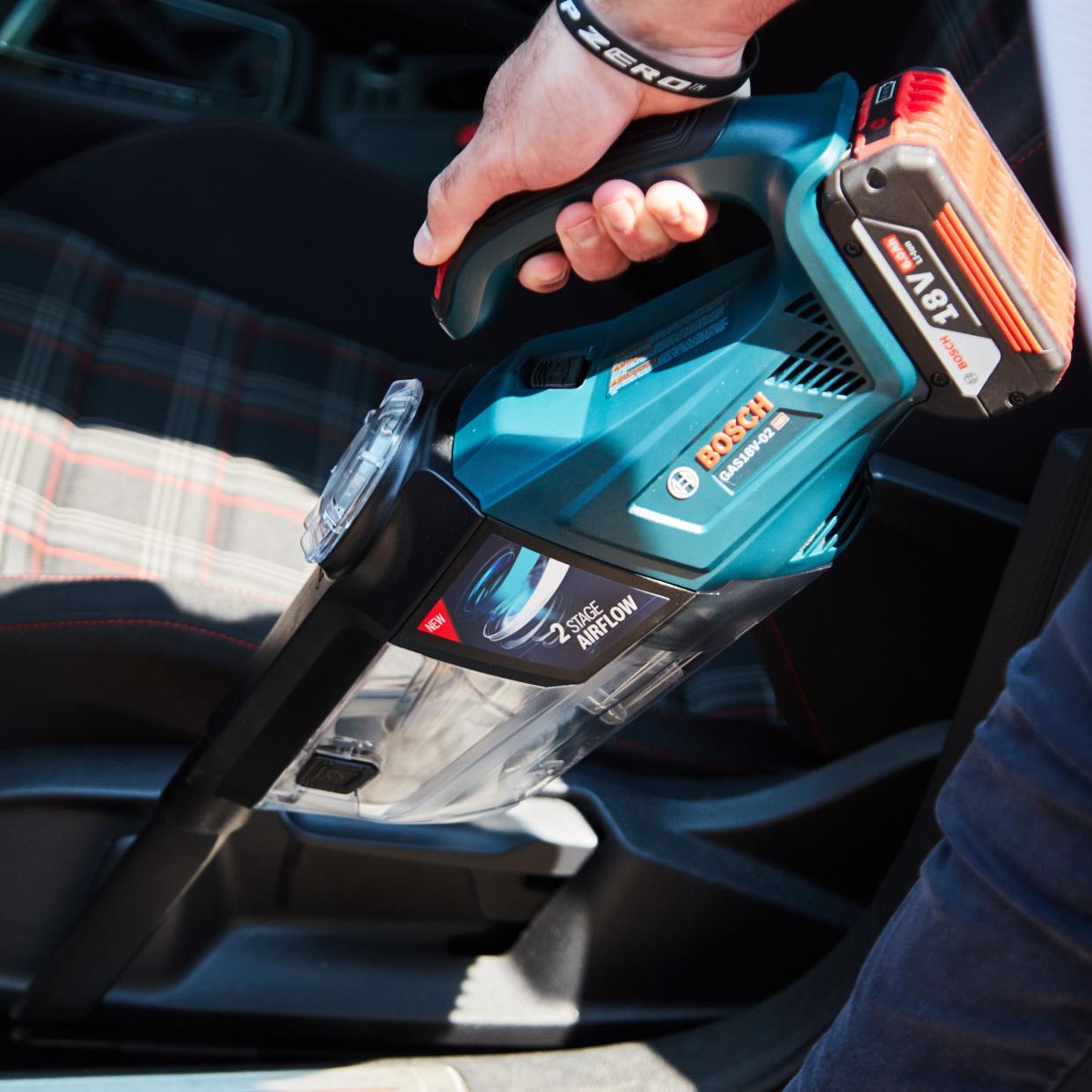
GAS18V-02N Portable Car Vacuum
amazon.com
Trevor RaabHaving produced high-quality power tools for decades, Bosch knows what it takes to impress its customers. Despite its simplicity, the GAS18V-02N vacuum is an excellent product coming in at a competitive price point. Throughout my testing, a 6.0-Ah battery pack was more than adequate to rid every crevice of my Volkswagen GTI of dirt, sand, leaves, and hair.
Bosch built the included attachments–crevice tool, floor nozzle, extension tubes, and hose–using non-scratch soft plastics.. While boasting impressive performance for its size, the added cost to purchase a battery and charger–roughly $120–makes this unit a tough sell for those on a budget. However, if you’ve already bought into the Bosch cordless ecosystem, buying this vacuum would be a solid choice.
You Might Also Like
